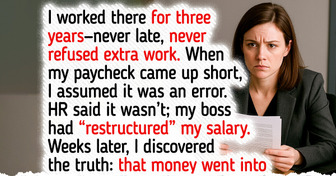My Brother Refuses to Help Our Sick Mom—So I Gave Him a Brutal Wake-Up Call


So time travel is real. Actually, you’re traveling through time right now. With every second of this article, you move one second into the future. Hehe.
But there’s one person on Earth who has managed to time travel a little further into the future, 0.02 of a second. And that’s not the limit. Meet Sergei Krikalev. He’s an astronaut who spent 803 days, 9 hours and 39 minutes on the International Space Station. That’s the key to his time travel.
The point is that for two objects, one standing still and the other moving, time flow is different. That is, if we take our planet as one object and the ISS as the other, time on Earth and on the ISS will go differently. But this is not enough to significantly affect time. We need to look at gravity.
The larger the object, the stronger its gravitational force. For example, on the Moon, you can jump higher and lift heavier objects than on Earth because the Moon is light. But on Jupiter, you can barely stand on your feet because it’s heavy, and its gravity is many times stronger. Gravity bends space-time itself.
Imagine a trampoline or a stretched sheet. As long as there’s nothing on it, space-time is even, and time is the same at all points. But put a heavy object there, and you’ll see a pit forming in it. Now imagine putting a heavy object like the planet Earth in the center of the sheet. It weighs six tons plus another 21 zeros. It would bend our sheet so much that time would go differently in the center than in a place where space-time is flat.
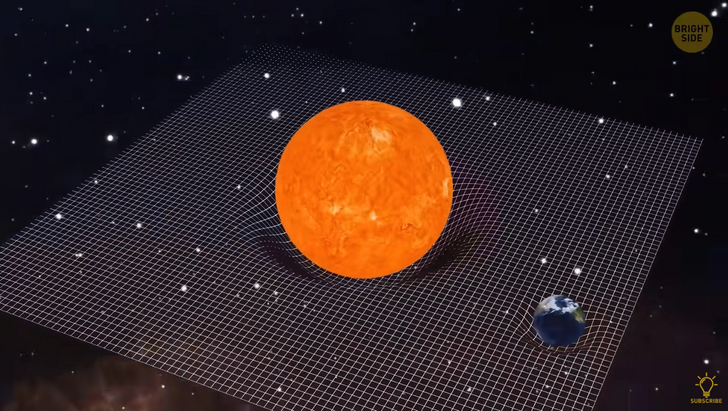
And the heavier the object, the greater the warp, and the slower time will go there. For example, near the Sun, time goes even slower than on our planet, because it’s more than 300,000 times heavier. Or take a black hole. Even a small one weighs tens or hundreds of times more than the Sun. And supermassive ones are millions and billions of times heavier. They will bend space-time so much that time near them practically stops.
So our hero, Sergei Krikalev used this very method of time travel. He just wasn’t at the very depth of this time-space vortex, but on the ISS. It’s at a point in space-time where the curvature of the sheet isn’t that strong. And time went a little faster for him than it does here. Just a little bit.
And if you spend enough time there, gradually, you start to overtake the people here on Earth in time. Sergei could’ve gone much farther in time, but another law of physics prevented him from doing so.
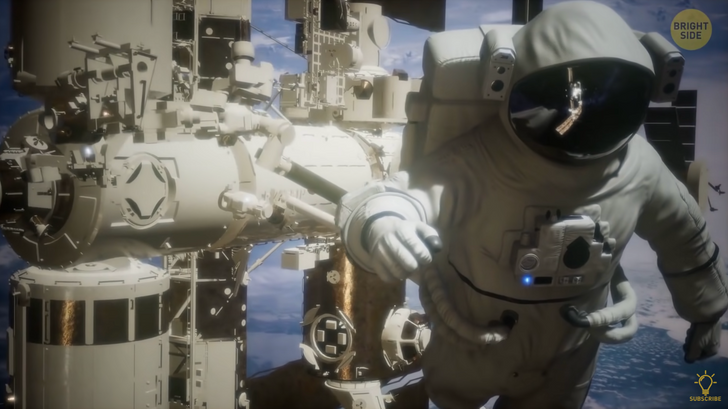
It’s all about the unity of space and time. If you’re standing, you’re only moving in time. But if you run forward, you move both in time and space. The faster you run through space, the slower you move in time. The International Space Station travels around our planet at 4.7 miles per second (7.66 km/s). This speed slowed down Sergei’s movement through time. So in more than 2 years on the ISS, he only traveled in time by 0.02 seconds.
So here’s a way to time travel for you. Seat your friend at a table and give them one watch. Put the other one on your arm and start running around the table. If you run fast and long enough, you’ll notice how the time on your watch and your friend’s is different. Voilà! You have traveled through time!
But there’re other ways to get to the future. For the first way, you need to get to a black hole. The closest one is just over 1,000 light years away from our solar system. You jump into your faster-than-light spaceship and arrive there. You need to fly as close as possible to its center, to the very edge of the event horizon. Space-time is so warped here that one second can be equal to weeks or even months on Earth. So just wait here for a few minutes.
Now turn the hyperdrives back on, and fly away. Of course, you have to be careful here. Black holes are so heavy that nothing can escape their gravitational force. Even light, which is the fastest thing in the universe, can’t escape a black hole’s embrace. But that’s no problem for you, and you’re already on your home planet.

Wow, it’s been decades on Earth while you’ve been away! There’re flying cars, robots and holograms everywhere! Another option is traveling at the speed of light. You and your friend are standing on the starting line at the stadium. And either of you has a stopwatch.
Press start! You run at the speed of light around the Earth a few times, and finish. Stop the clock! The time with which you ran your sprint is less than that of your friend who was standing still. But there’s a so-called “twin paradox” that scientists are still racking their brains over. It’s all about what to take as a reference point.
If the center of the coordinate system is a person standing still, and the other is running at the speed of light, then the runner’s clock will lag after the run. Because they were moving not only in time, but also in space, remember? But if you take the runner as the reference point, it was the static person who was in motion, relative to them. And then the static person’s clock would have to be behind. So as a result of the experiment, both guys’ clocks, the runner and the static guy, would show the same time. This is the twin paradox.
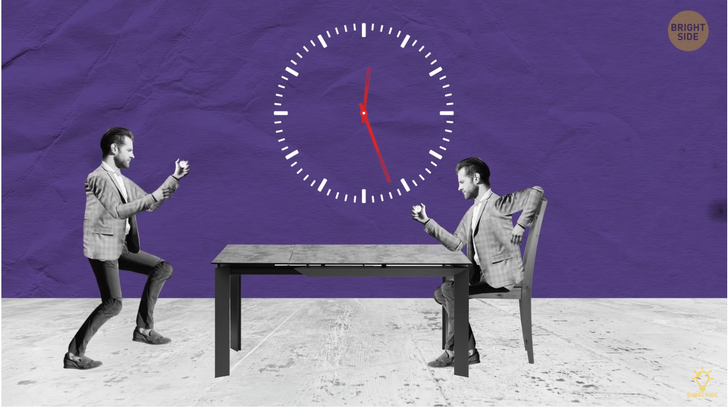
Another way to cheat the laws of physics and stop the flow of time is to get into the plank. Then time just stops for you! Okay, just kidding. Assuming that traveling back in time is possible, there’s a whole bunch of problems and paradoxes.
For example, at 12 p.m., you’re engaged in building a time machine. At 12:30, you finish building it. And then, at 1:00 p.m., you enter it for one purpose — to prevent you from building the time machine yourself. Then you go back in time at 12:20, when the time machine is almost finished, and break one of its details so that it can’t be built to start with.
But if your younger version couldn’t build a time machine, there’s no way you could get to the past either, right? Or if you did build a time machine and went back in time to your father when he was on a date with your mom. You ruin their date and they break up.
In this case, your birth would’ve been impossible. But if you hadn’t been born, you would never have built a time machine and gone back in time to ruin your daddy’s date. And then nothing would’ve interfered with your birth. Wow, things are getting too complicated.
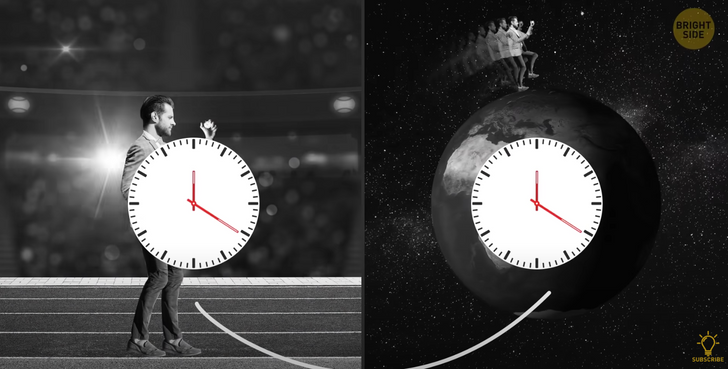
Okay, there’re simpler ways to travel through time. For example, biological ones. I’m talking about freezing. If you freeze your body, you will move through time with the rest of the world. But you’ll be asleep the whole time. And when you wake up, you’ll be in the future. By the way, animals that hibernate in winter, like bears, are time travelers. They simply skip the hungry winter seasons.
But there’s one problem with that. When we freeze, the water in our cells and tissues turns to ice. And as a consequence, they feel dehydrated, like in a desert. This can be avoided by using protective chemicals. But the hardest part is the awakening. Our scientists can’t safely unfreeze a living organism.
So for now, freezing your body is a one-way ticket. But we have hope that scientists of the future will find a way to avoid damaging cells and tissues. Then, they’ll open refrigerators with people, and wake up a whole bunch of time travelers. And that’s a pretty expensive adventure. Freezing an entire body can cost $200,000 or more. But many people believe that time travel is already real.
And some time travelers have been caught in photographs or camera footage. For example, a photo from 1941. There are men in suits and women in elegant hats. And among them, this guy in futuristic glasses and hoodie. Or this video where you can see a woman in the background... Talking on her cell phone? Wow, that was about a century ago, and back then, no one could imagine what a cell phone was.
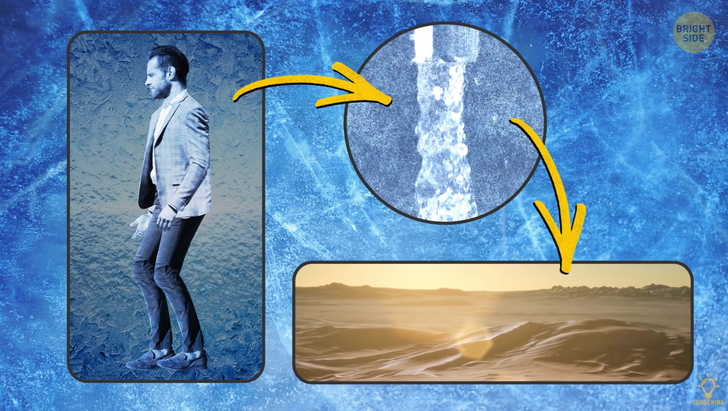
Well, these facts can be easily explained. The man in the photo is wearing glasses that were made back in 1920, and the T-shirt and hoodie also already existed at that time. And the woman talking on the cell phone is actually holding an Acousticon in her hand. It’s a kind of hearing aid. One of the first of its kind.
So we can say one thing for sure: time travel remains just a dream for all people. Except Sergei Krikalev, who was able to trick the laws of physics and be 0.02 seconds ahead of all the people on Earth.


